In the fast-paced world of healthcare, data accessibility is quickly becoming a necessity. Healthcare providers are no longer satisfied with just collecting data from patient records, billing systems, HR platforms, and marketing analytics. Today’s leading practices recognize that the true value lies in accessing, interpreting, and acting on that information quickly and accurately. As healthcare grows more complex and competitive, organizations that prioritize data accessibility are better positioned to improve patient care, streamline operations, and scale sustainably. Physicians and practice administrators need to understand that data accessibility could be the key to better decision-making, faster growth, and greater operational success.
Unlocking Data Insights in Healthcare
When business intelligence first entered the healthcare landscape, access to data was often clunky and limited. Staff had to rely heavily on manual spreadsheets, fragmented reports, and error-prone exports from multiple systems. It wasn’t unusual for clinic managers to base their decisions on outdated snapshots manually compiled from separate billing, HR, and clinical platforms.
Today, thanks to advances in technology, data accessibility has significantly improved. Instead of waiting days—or even weeks—for reports, frontline staff and leadership teams can now access real-time dashboards tailored to their specific roles. Whether measuring cash collections, tracking patient wait times, or monitoring eligibility denials, data is available at their fingertips.
By minimizing friction and improving the user experience, practices empower more team members to leverage insights daily, not just finance or executive leadership.
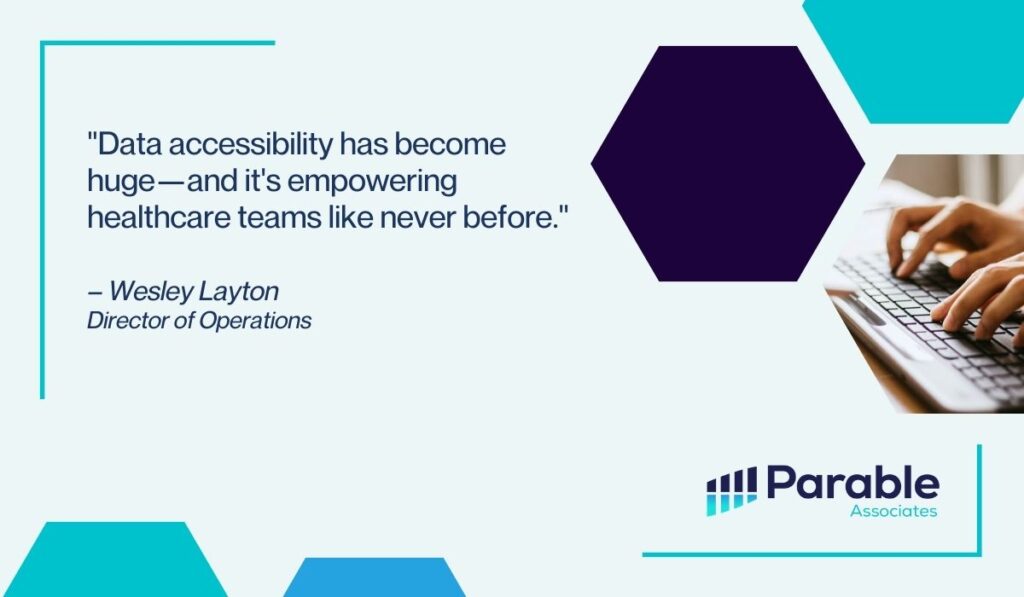
The Evolution of Business Intelligence
The old model of relying solely on finance teams to pull data and create custom spreadsheets is quickly becoming outdated. While finance remains a vital consumer of healthcare analytics, operational teams are emerging as some of the most data-hungry users.
Practice managers, billing teams, patient services coordinators, and clinical operations staff now recognize that data accessibility helps them not just track performance, but actively improve it. From monitoring door-to-door patient flow to identifying gaps in copay collection, day-to-day operations are increasingly driven by metrics.
Modern business intelligence platforms, such as Tableau and Power BI, make it easier than ever to build persona-based dashboards. Whether it’s a clinic manager monitoring front-desk collections or a billing manager tracking denial trends, these dashboards provide the exact insights they need without an overwhelming amount of irrelevant data.
By tailoring data access and visualization to specific users, practices create a culture where improvement is measurable, visible, and actionable.
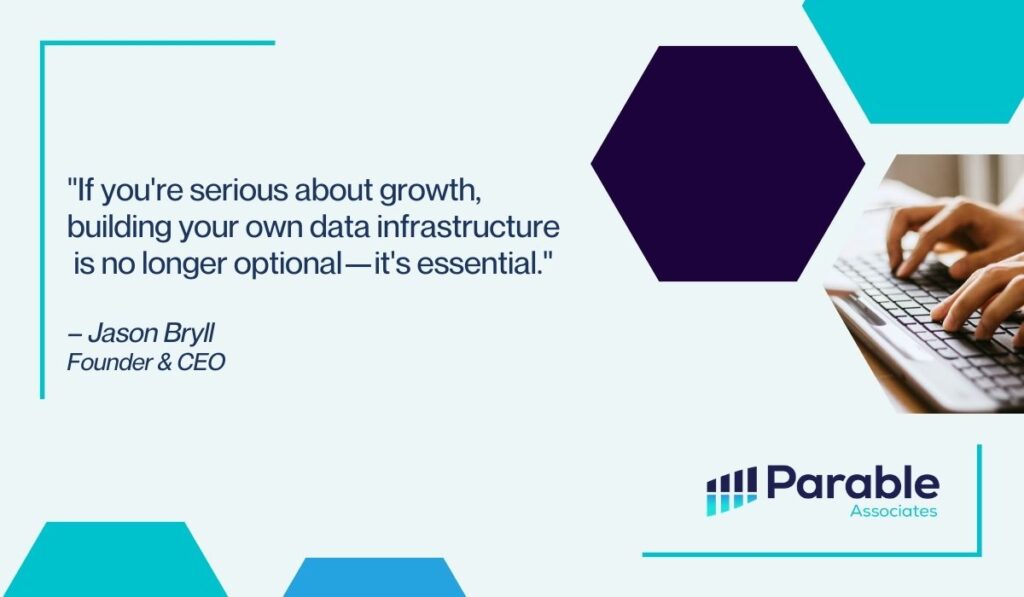
Best Practices for Data-Driven Healthcare
The most successful healthcare organizations share a common trait: they make data accessibility easy and intuitive for their teams. Best practices for effective BI deployment include:
- Persona-specific reporting: Create dashboards that are specific to each role, such as clinic managers, billing teams, and operations directors.
- Drill-down capabilities: Allow users not only to see top-level KPIs but also to dig deeper into the factors driving those numbers.
- Real-time insights: Implement live dashboards that update regularly, removing the lag that often cripples traditional reporting models.
However, achieving seamless data accessibility requires more than just software upgrades. It demands intentional design, thoughtful integration across platforms, and a strategic focus on what each user truly needs to succeed.
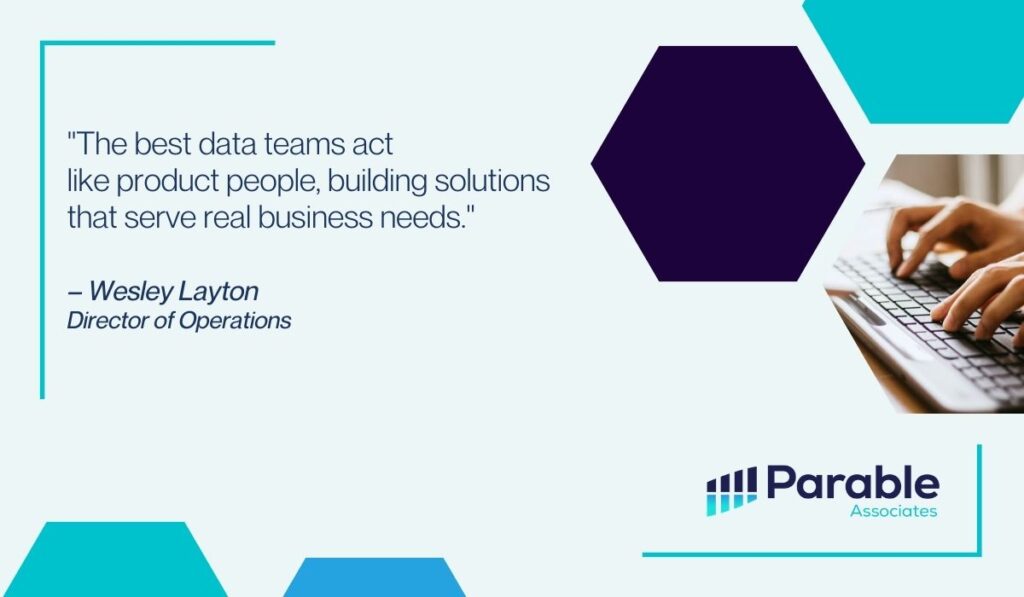
Identifying Data Needs Across Roles
Historically, finance and revenue cycle management (RCM) teams were seen as the primary drivers of data initiatives in healthcare. Their need for financial reports, claims analysis, and revenue forecasting made them natural champions of early BI efforts.
Today, that demand for data has spread across the entire organization. Operational leaders increasingly demand detailed reporting on appointment volumes, patient satisfaction, staff performance, and even marketing ROI.
By prioritizing data accessibility across multiple departments, not just finance, practices unlock a broader range of insights. With new tools that allow multiple systems (like EHRs, patient engagement platforms, HRIS, and billing systems) to feed into unified dashboards, every corner of a healthcare organization can operate smarter and faster.
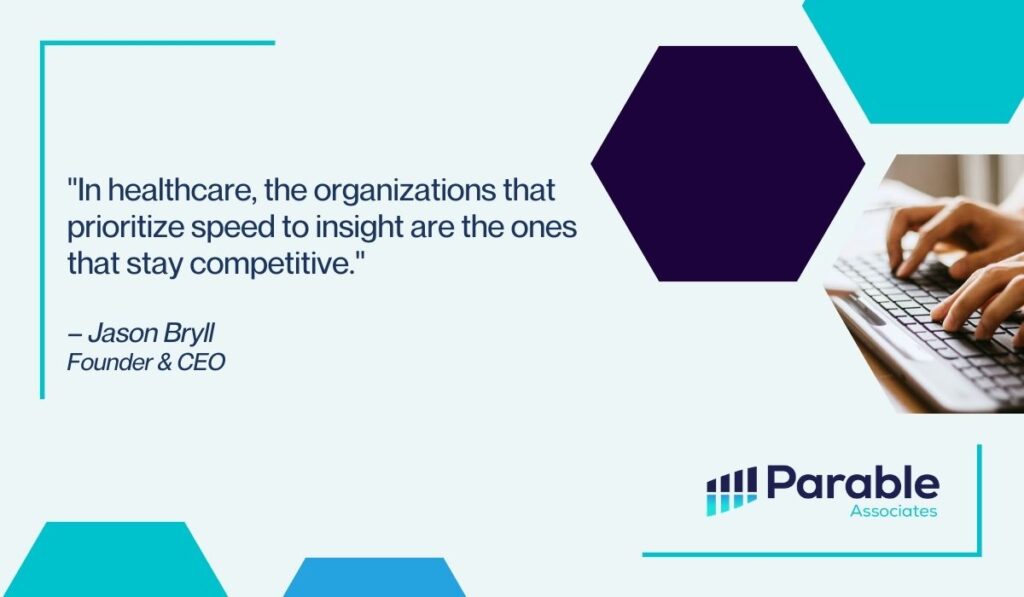
The Role of Analysts in Data Visualization
Not every data-savvy team member is equipped to build enterprise-level reporting systems. Being proficient in Excel is a great start, but translating raw data into accessible, intuitive, and actionable dashboards requires a distinct skill set.
In successful healthcare organizations, BI analysts don’t just crunch numbers. They act like product designers, creating reporting tools that are user-friendly, scalable, and aligned with the organization’s goals.
Their role in improving data accessibility cannot be overstated. Analysts understand the needs of both end-users and technical developers, helping to bridge the gap between what the business wants to know and how the data platform delivers those answers.
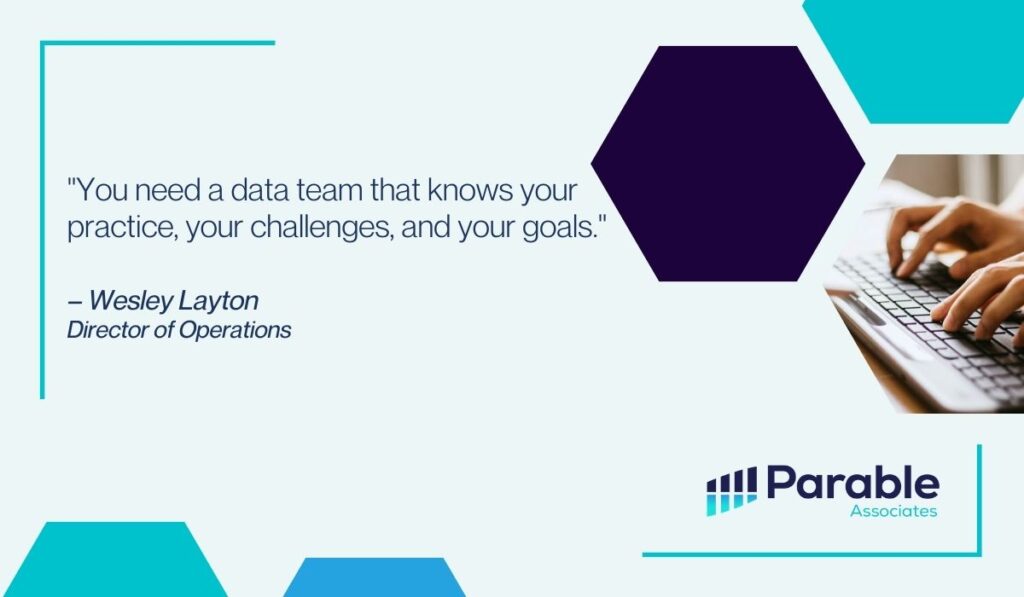
The Limitations of Off-the-Shelf Solutions
While many off-the-shelf analytics platforms are marketed to healthcare practices, few are truly plug-and-play. Every practice has its own operational workflows, unique financial models, custom KPIs, and patient care priorities.
Without customization, off-the-shelf solutions often create more work, forcing staff to manually manipulate exports, reconcile discrepancies, or juggle multiple systems. True data accessibility requires more than a basic dashboard. It demands integration across systems and alignment with business-specific goals.
Practices serious about building a lasting, effective BI program often find that working with a specialized partner is the best way to achieve the right balance between speed, flexibility, and functionality.
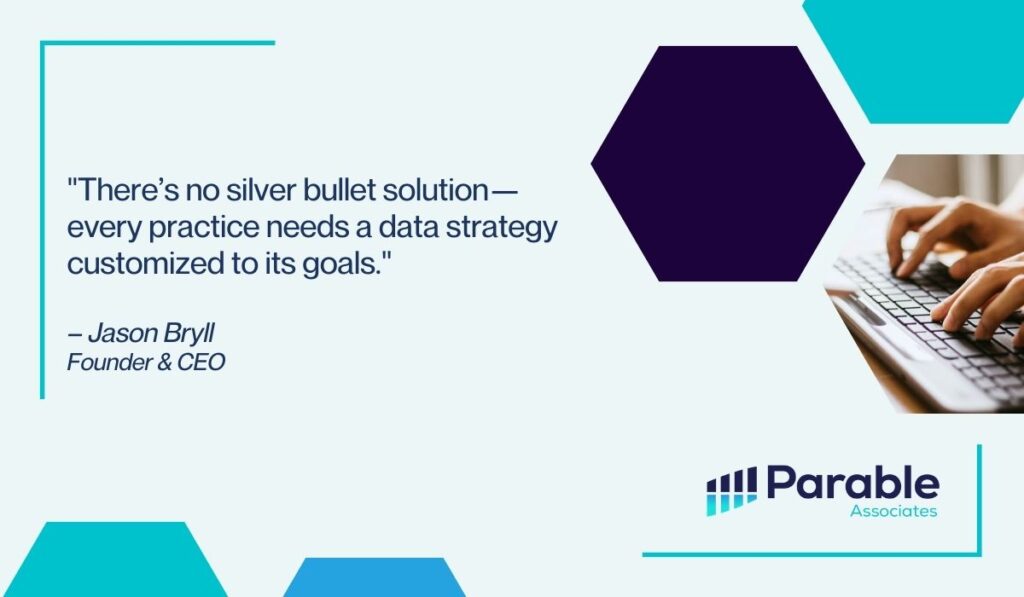
The Impact of AI on Data Management
Artificial Intelligence (AI) is poised to reshape the healthcare data landscape even further. Emerging features in platforms like Power BI and Tableau are using AI to enhance data accessibility by enabling natural language queries, predictive analytics, and automated anomaly detection.
For healthcare practices, this means that soon, staff will be able to ask simple questions, such as “Which clinic has the highest rate of missed appointments this month?” and receive immediate, actionable answers.
AI won’t eliminate the need for structured data environments. If anything, it heightens the need for clean, centralized, and well-modeled data. Practices that invest now in foundational BI and prioritize data accessibility will be best positioned to leverage future AI innovations.
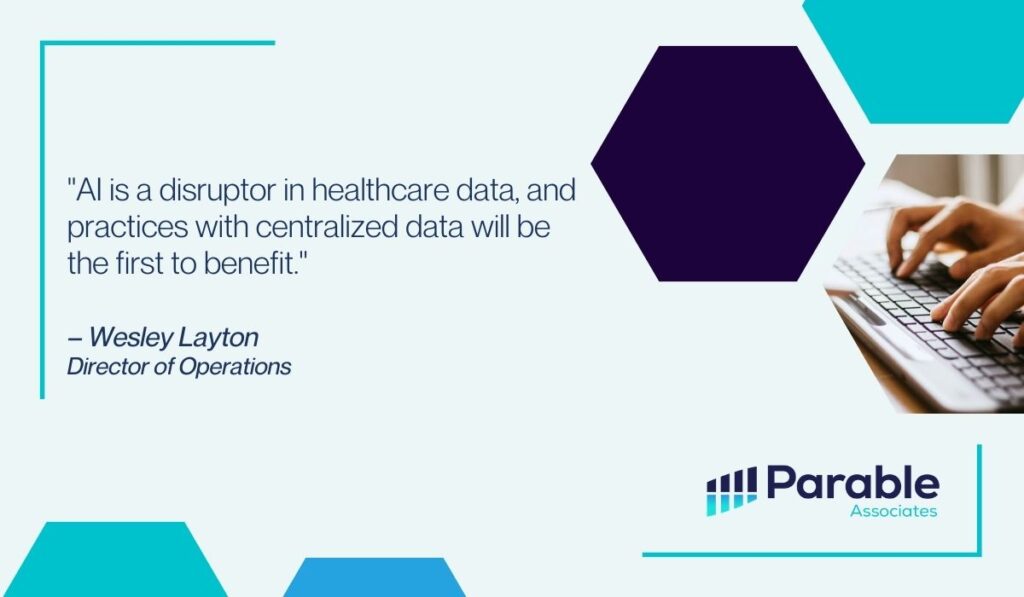
Next Steps to Improve Data Accessibility
If your healthcare practice is still relying on spreadsheets, manual exports, or siloed reporting systems, now is the time to act. Improving data accessibility is not just about convenience—it’s about operational excellence, patient satisfaction, financial strength, and future growth.
The first step is evaluating your current BI environment:
- Are your data sources centralized?
- Do your teams have real-time access to the information they need?
- Are you using a modern BI tool like Tableau or Power BI?
- Do your dashboards align with your strategic goals?
If the answer to any of these questions is no, your practice could benefit from a comprehensive BI overhaul.
Your Partner for Healthcare Business Intelligence Success
At Parable Associates, we understand that every healthcare practice is unique, and so are its data needs. That’s why we specialize in building customized business intelligence and data warehousing solutions that prioritize data accessibility at every level of your organization.
With deep experience in both healthcare operations and advanced analytics platforms like Tableau, Power BI, Snowflake, and more, the Parable team builds BI solutions that go beyond dashboards. We align our work with your clinical workflows, financial goals, and patient care priorities. Our team of healthcare-savvy data engineers, BI developers, and analysts acts as an extension of your organization, helping you unlock your data’s full potential.
Whether you’re just beginning BI implementation or want to upgrade your current reporting process, Parable Associates is the trusted choice for healthcare practices ready to grow smarter and faster.
Schedule a consultation and see how improving data accessibility can transform the way you operate, deliver care, and lead in today’s competitive healthcare environment.
Data Accessibility FAQs
What is data accessibility in healthcare?
Data accessibility in healthcare refers to the ability of staff and administrators to quickly and easily access, interpret, and act on critical information across multiple systems like EHRs, billing software, HR platforms, and marketing tools.
Why is data accessibility important for healthcare practices?
Improving data accessibility allows practices to make faster, more informed decisions, enhance patient care, increase operational efficiency, and drive sustainable growth.
How does modern business intelligence improve data accessibility?I
Modern BI tools like Tableau and Power BI centralize information from different platforms and create user-friendly dashboards, allowing teams to access real-time, role-specific insights without relying on manual spreadsheets.
Who benefits the most from better data accessibility?
While finance teams have traditionally led data initiatives, operations managers, clinic leaders, patient services, marketing, and even clinical teams are now some of the biggest consumers of accessible data.
What are persona-based dashboards?
Persona-based dashboards are customized views built for specific roles, like physicians, clinic managers, or billing coordinators, so users see only the metrics and KPIs most relevant to their responsibilities.
Why aren’t off-the-shelf analytics solutions enough?
Every practice has unique workflows and KPIs. Off-the-shelf solutions often require extensive customization to align with operational needs, making tailored BI platforms essential for full data accessibility.
How does AI enhance data accessibility in healthcare?
AI-powered BI tools can process complex data faster, enable natural language queries (like asking a dashboard a question), and uncover hidden insights without requiring advanced technical skills.
What should a healthcare practice do first to improve data accessibility?
Practices should start by centralizing their data into a single platform, choosing a modern BI tool, and building dashboards that align with their strategic and operational goals.
Does improving data accessibility require a large team?
Not necessarily. Practices can often partner with specialized BI firms like Parable Associates to build customized data platforms without needing to hire a full internal data team.
Why choose Parable Associates for business intelligence implementation?
Parable Associates combines deep healthcare expertise with advanced BI solutions, delivering fully customized systems that prioritize data accessibility and drive measurable practice growth.


